Quick review and test of the Perception Neuron Lite MoCap system
Noitom specializes in affordable inertial motion capture devices and software, specifically their own line of MoCap systems called Perception Neuron.
Yesterday I finally received my Perception Neuron Lite kit which is a 6-neuron system for those who want to interact with 3D objects in a virtual reality headset or are just looking to try out Perception Neuron before investing into a complete 18- or 32-neuron kits. I was interested in Noitom tech since the first days they started their Kickstarter campaign back in 2014, so it's only natural I jumped the bandwagon and ordered one as soon as the opportunity presented itself.
This is what arrived with the order and what I'll briefly review:
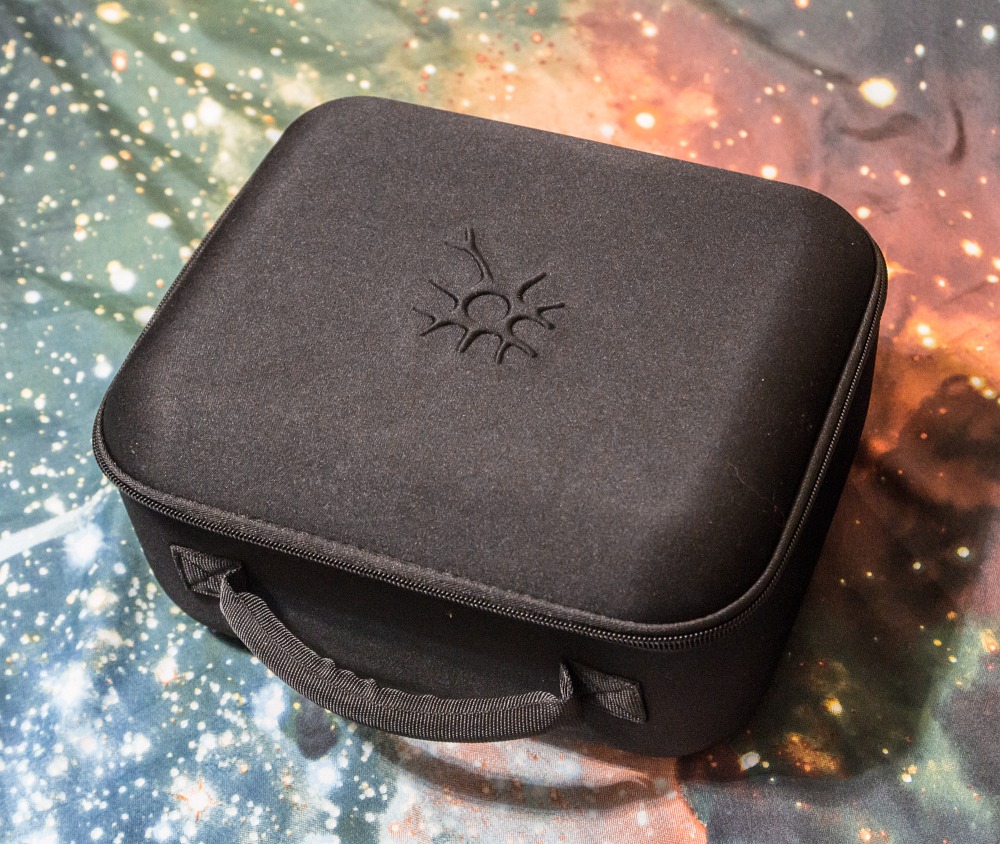
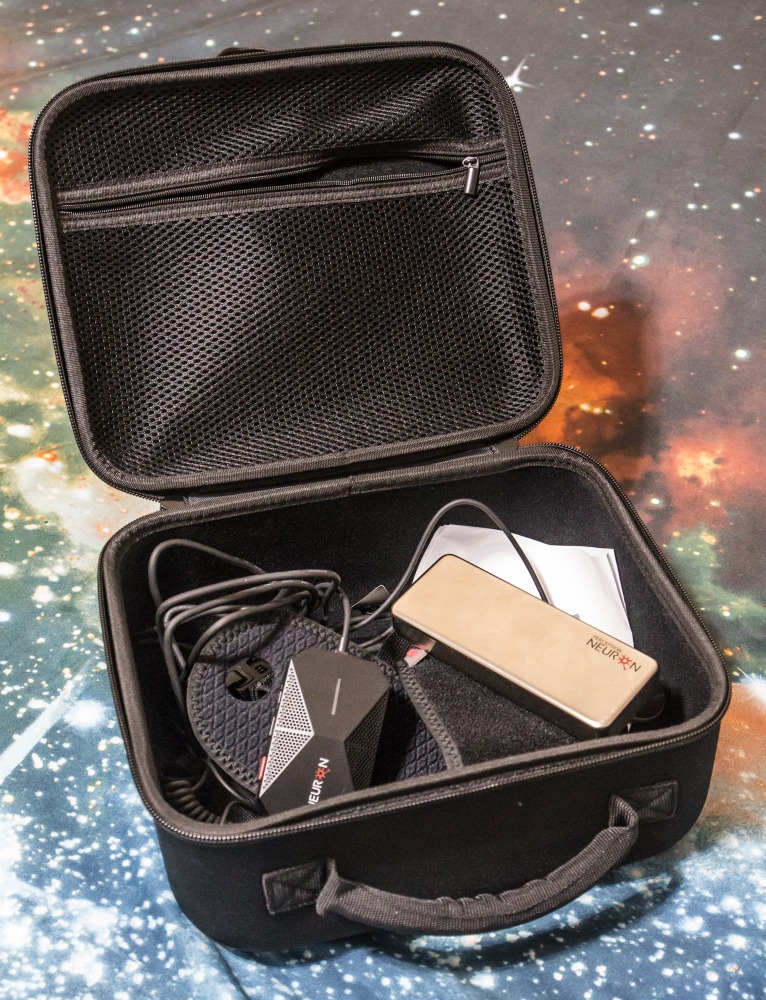
It's important to remember that this is an inertial MoCap system, which means it comes with extremely sensitive sensors which only work in a relatively magnetically safe environment. They are so sensitive in fact, that they come in a special anti-mag container. After use they should always reside inside to make sure they don't magnetize which would render them useless.
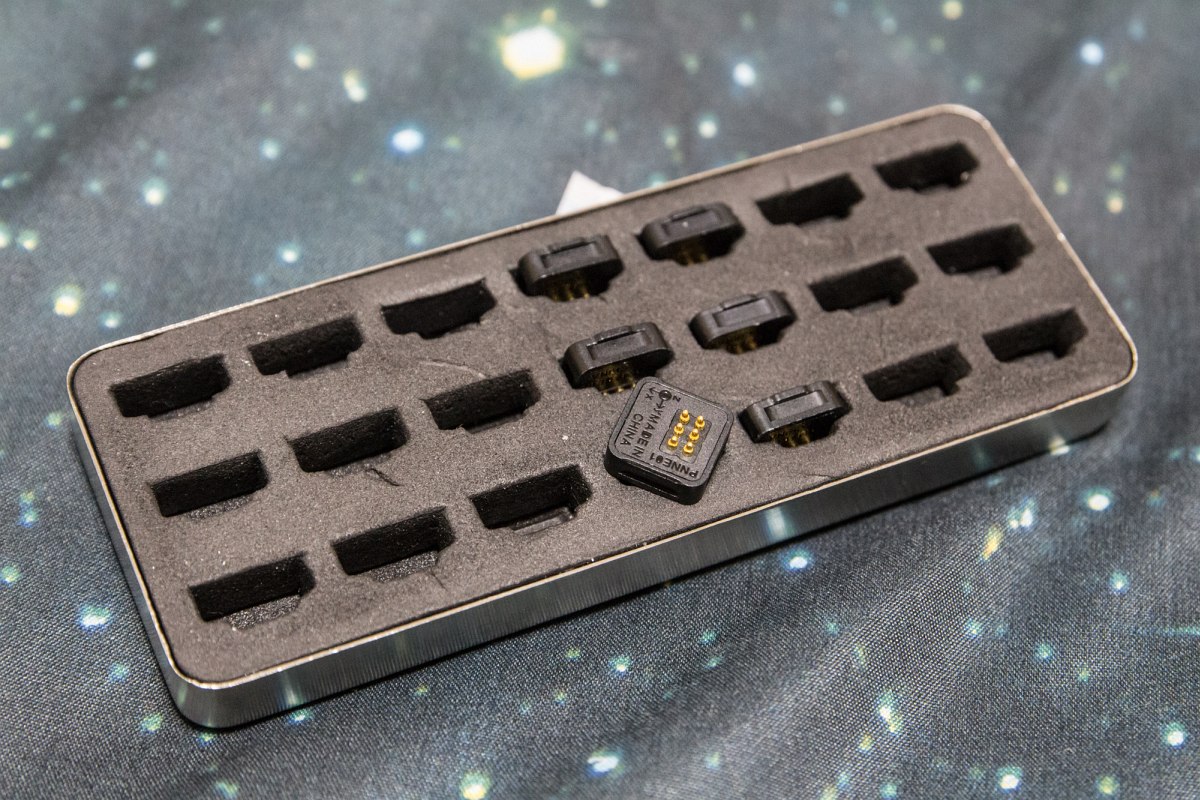
Having said that I must admit that I had no issues whatsoever using them even in close proximity to a monitor screen, PC and even my Wi-Fi router. There's also a crazy amount of Wi-Fi networks available all around the apartment so all I can say is – the system worked like a charm even in such non-perfect conditions which was a very pleasant surprise!

Setting the whole thing up was quite intuitive, although I found the manual quite lacking in detail on how to assemble the cables and put it all together. Just a Quick Start Guide and you're kind of on your own.
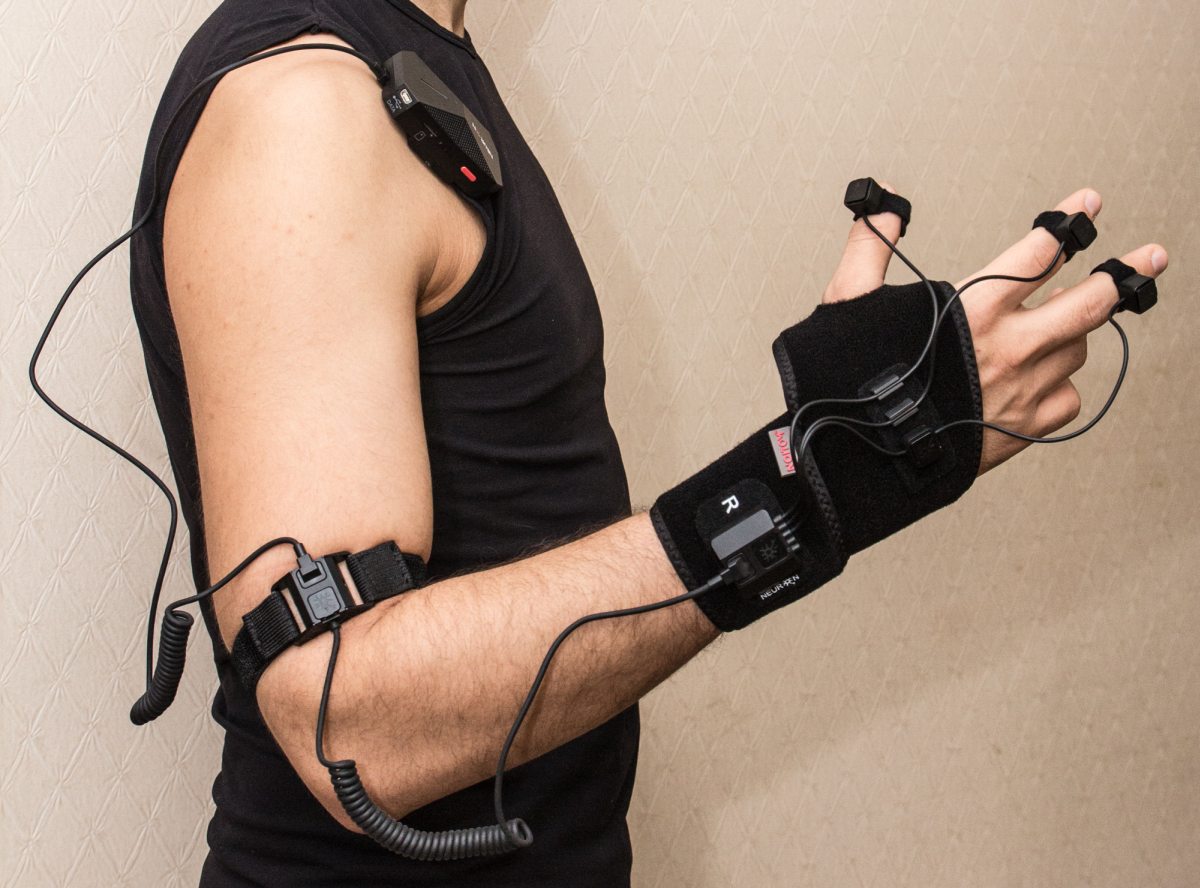
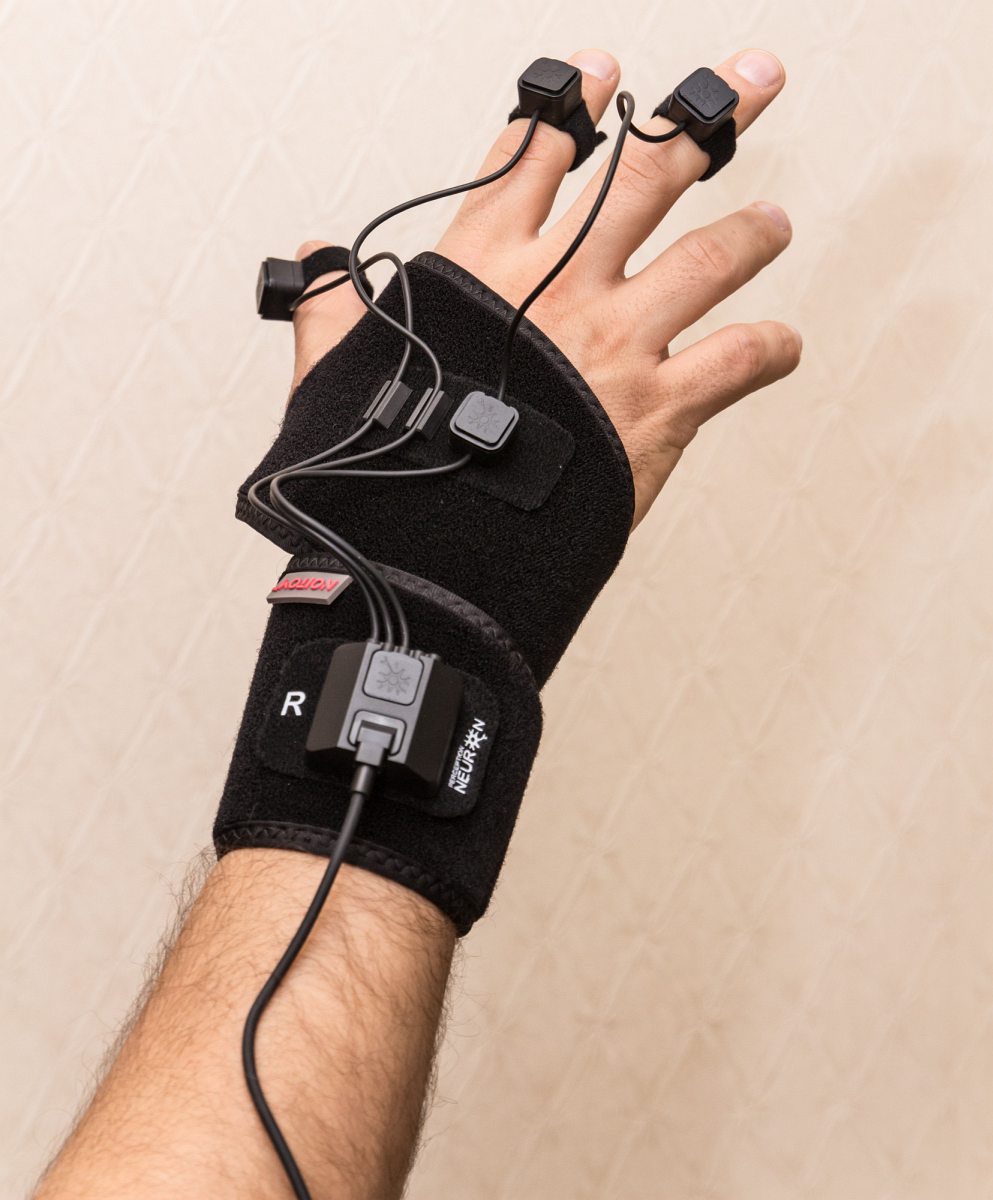
This particular kit doesn't come with a standard glove but rather some sort of a Velcro strap you wrap around your wrist whilst securing it with your thumb. In fact all non-electric elements or connectors have Velcro strips for placing on top of the base elements.
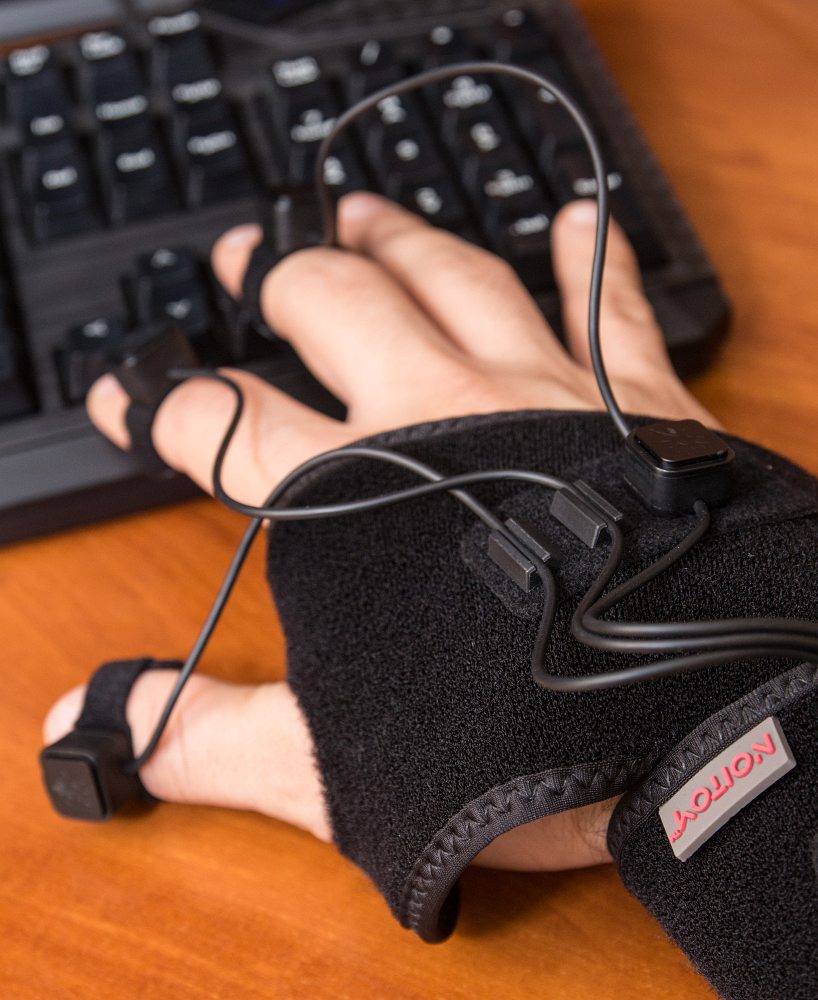
There's also a semi-interactive manual provided with the Axis Neuron software, but it mostly explains how the system works. Axis Neuron is a specialized app by Noitom designed to record and playback the MoCap data from the Perception Neuron system and it works quite well!
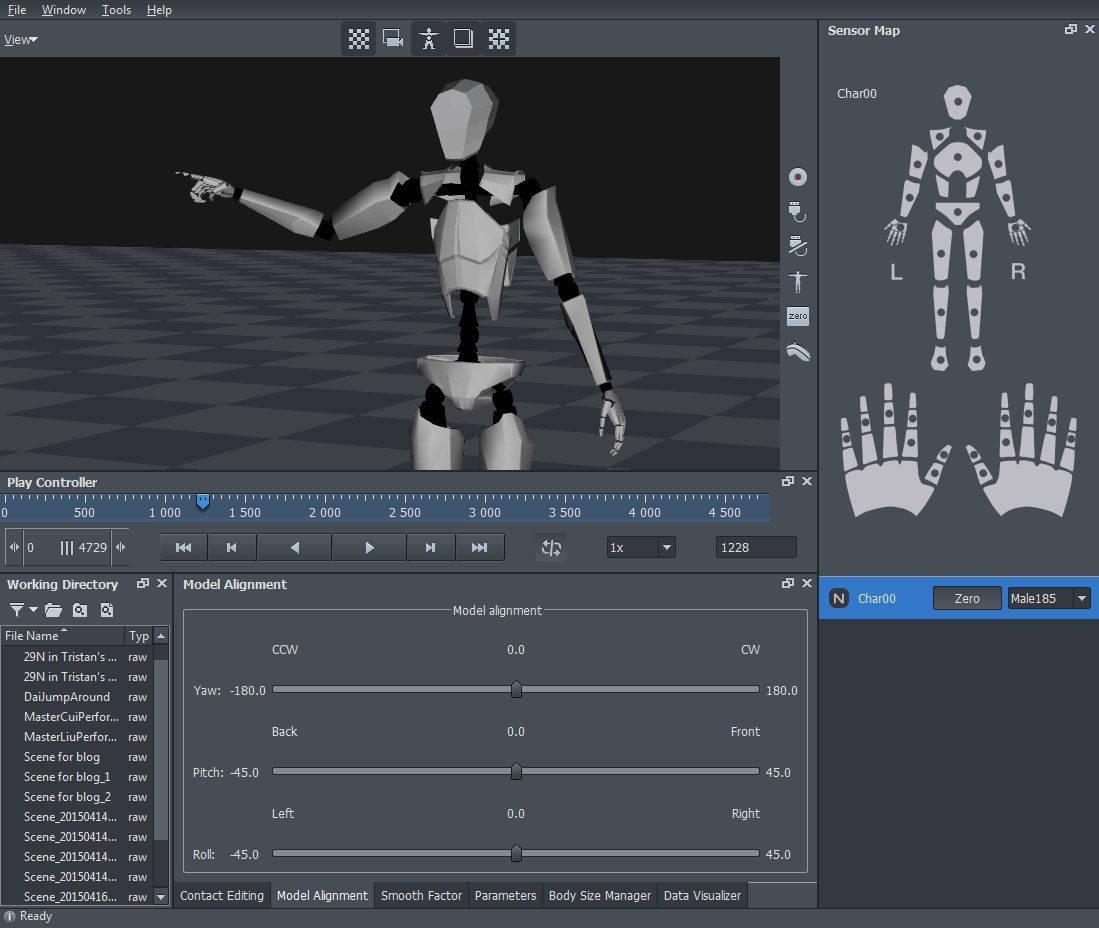
There are two editions: Standard and Pro, the latter costing about 700$ but (in theory) available for free for all Perception Neuron owners. I've contacted support on how to obtain access to the Pro version since it has all bells and whistles including motion smoothing, contact editing and other tools the Standard version is lacking.
UPDATE: Noitom support team replied the very next day with the info on how to receive my copy of Axis Neuron Pro, so now I'm a happy Pro user. Thank you, guys!
After quick set-up and calibration I was actually able to produce a descent take. Here's the raw recording without any smoothing or filtering to showcase what PN is capable of:
All in all, I can definetely say that the system works and can process even relatively fast motion. It will surely come in handy when the time comes to animate the characters in the film, so my next purchase from Noitom will be the 32-neuron full-body MoCap set. Can't wait!
Redshift presentation at SIGGRAPH 2016
Just an FYI for those who missed Redshift team's SIGGRAPH 2016 presentation.
Great stuff, guys. Go Redshift!
What did you render with Redshift today?
Questionable Design of the Final Fantasy XV Female Mechanic Cindy
I've been multitasking a bit lately: working on stages for the film, composing a soundtrack with a music producer and, with an artist — developing one of the main characters of the film who is (surprise-surprise!) a young attractive girl — a romantic interest of the other one who is male.

While looking for references and such I decided to take a break a watched the latest episode of Conan O'Brien's "Clueless Gamer" where he played the latest game from the Final Fantasy series - Final Fantasy XV.
It was all fun and laughs for me until I saw the female mechanic character named Cindy:
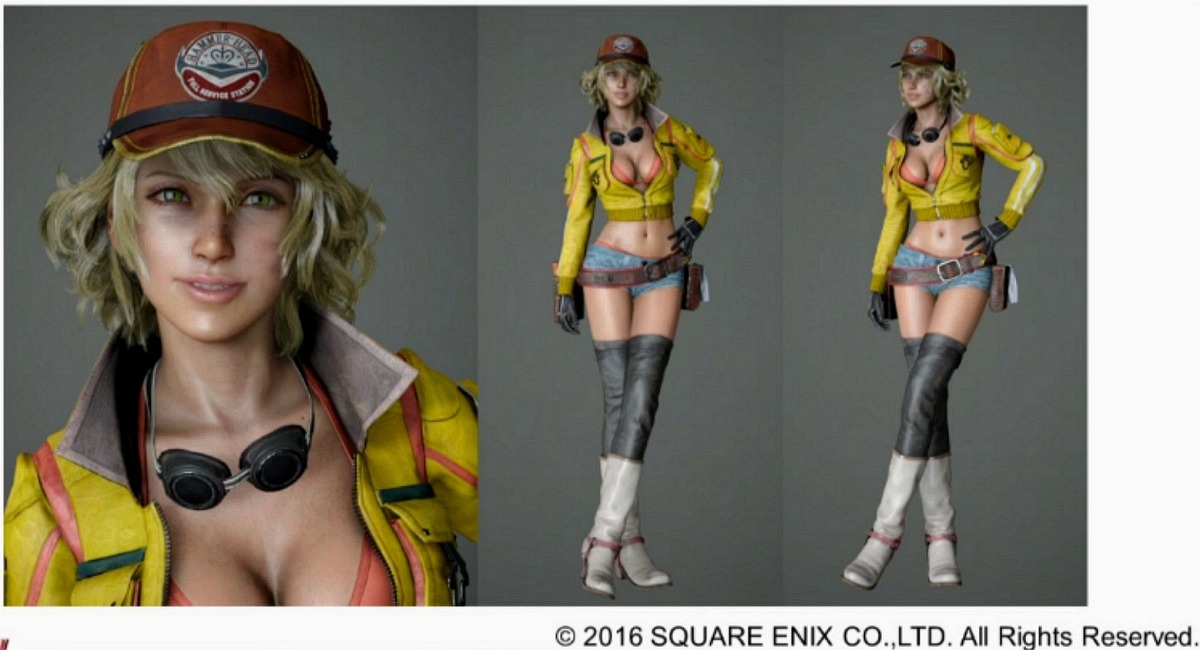
Yes, this is supposed to be a mechanic. Yes, they proudly display her on the game's website:
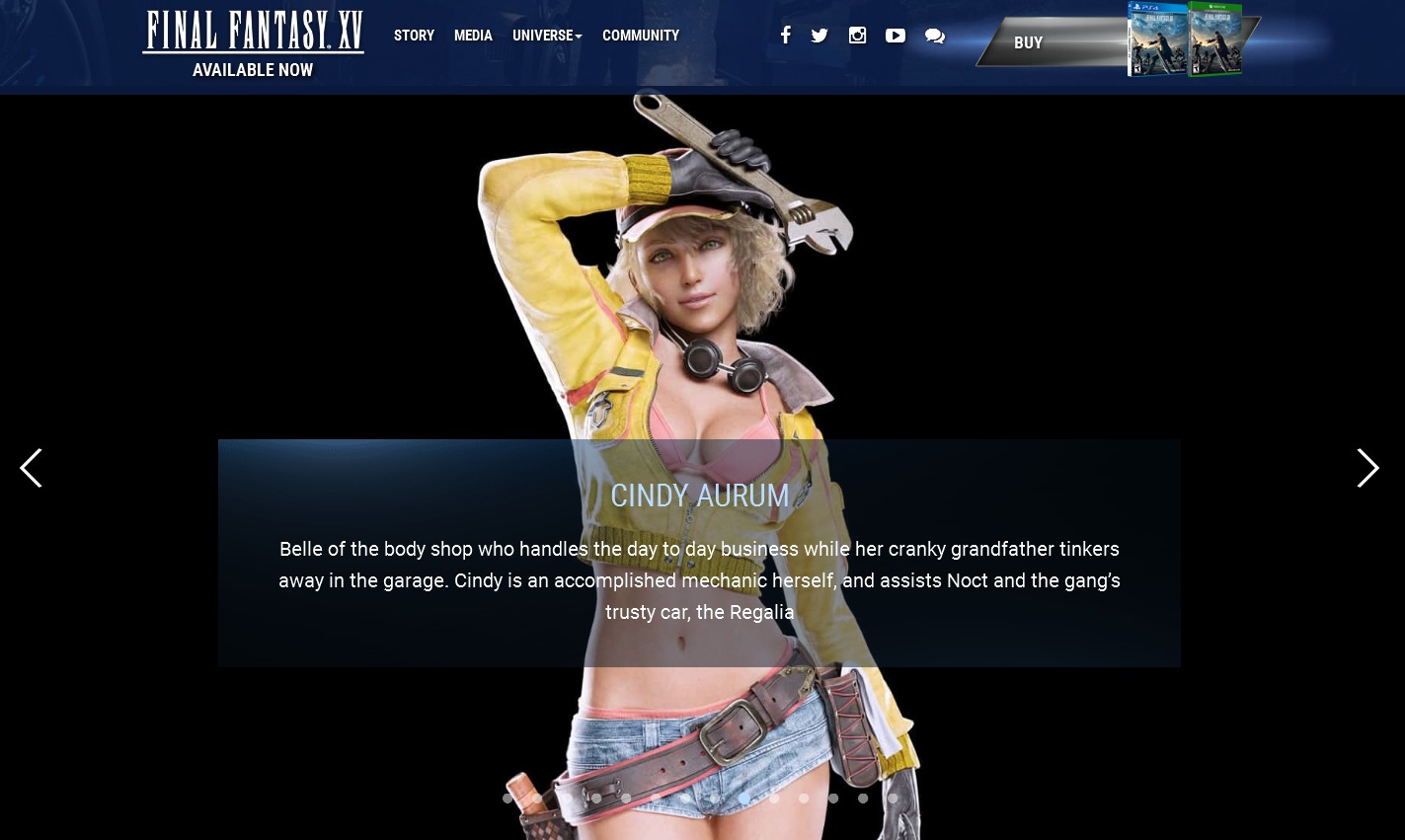
And yes, this is the most tasteless, awkward and pathetic attempt at a "sexy" female character I've seen in a videogame for a looong time. But this is not the only reason I decided to make a post on her. I'll get to it in a minute.
Now, don't get me wrong, I love the female form, especially when portrayed well, and especially sexy.
But this... This is just...
The Height Of Just-Too-Muchery
I believe everything should have its time and place and be, well... logically sound. Even when it comes to entertainment products. With Cindy Square Enix clearly overdid it.
Consider the following:
You have a character that does this:
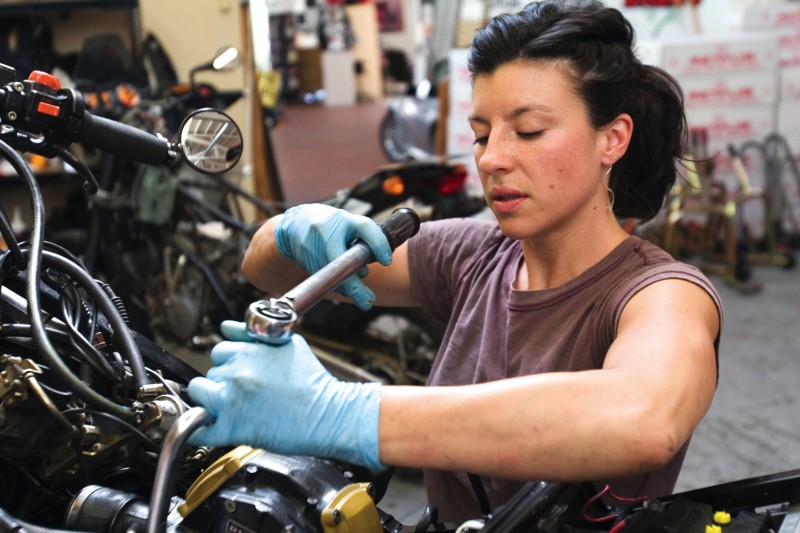
Looks like this:

Talks like this:

And strikes poses from the Victoria's Secret catalogue, like this one:
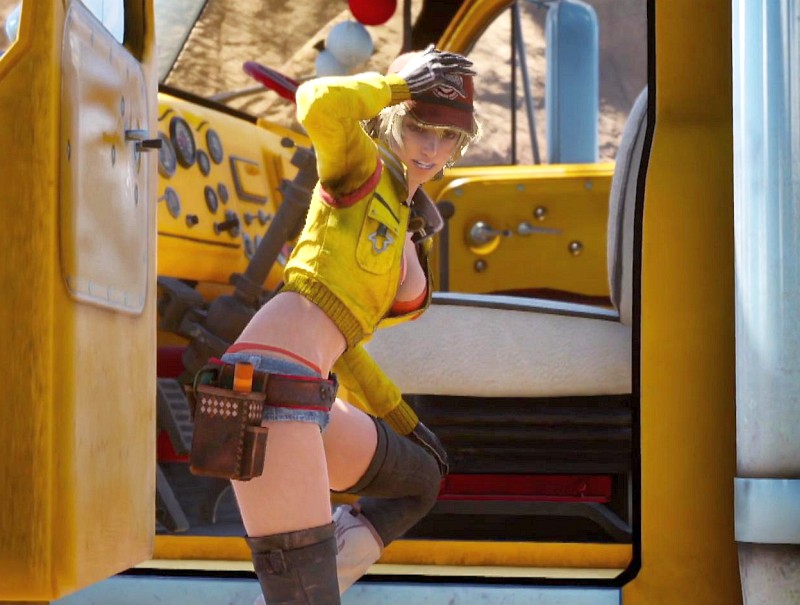
Is that what a female mechanic is supposed to look like?
Maybe it was because at some point during development SE realized that they had a party of four metro-sexual men as main characters of the narrative and decided to compensate, I don't know. What I do know though is how female heroes were portrayed in the previous games. Although there were skimpy costumes for some of the characters they didn't seem to be out of place and were more of a fan service sort of thing for those who took their time to unlock or buy such clothing in-game. It was never such and awkward in your face presentation, especially not in the first hour of the game.
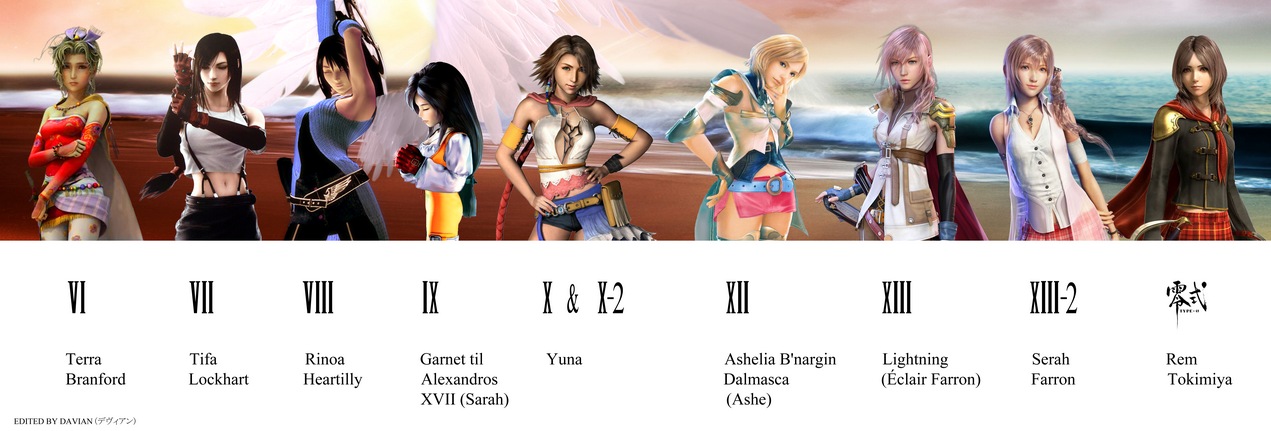
The Cowardly Response
Here's why I made this post. To document that, as if to add insult to injury, Director Hajime Tabata said that "Cindy was not meant to be an erotic character, but energetic and outgoing, and he didn't want to change the current concept. He talked about moderating the way she's presented, rather than covering her up".
Yeah. Riiight...
I guess this is why there's a distinctly visible tan-line under her ultra-short shorts.
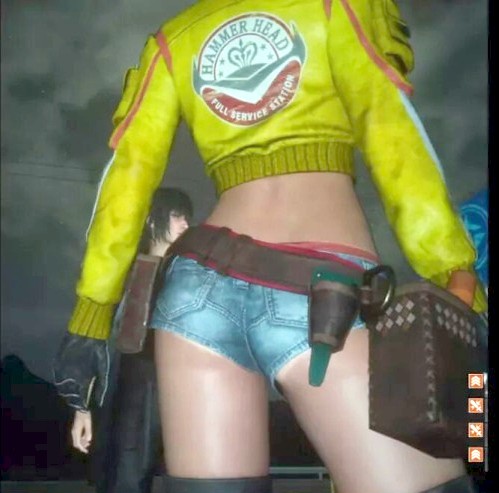
If you're trying to appeal to the male demographic just admit it and don't try to weasel your way out, Square Enix. There's nothing wrong in making a sexualized character design, as long as you openly present it as your original intent. Have some dignity.
How It's Done
Final Fantasy isn't the first Japanese game to have overly-sexy characters, but I believe this is in fact the first AAA-title to do it while trying to cover it up with good intentions.
Remember Dead or Alive game series? It sure had its share of sexy character designs, but, first of all, they never tried to cover it up, openly discussing the physics of the breasts, and it's, well, meant to be hilarious and absurd with over-the-top character designs and nonsensical trivial story, it doesn't make you feel awkward and sorry for the developers who obviously had lots of fun making the game. And of course it's not an RPG which tries too much to be so serious and then trips on it's own shoelaces with pointlessly forced sexy characters, like FFXV does.

Or how about another, even better known example — the design of 2B from Nier: Automata. When Yoko Taro, Director of the game, was asked why a battle droid needed to wear high heels, he replied: "I just really like girls". Isn't this the most genuine, straightforward and dignifying answer?

Well... Let's wrap up with another sexy mechanic – this Overwatch D.VA character fanart by Li Chunfu. It's well-done, on-character and most importantly, Mr. Li genuinely intends his females to appeal to male demographic, be attractive, and sometimes erotic and doesn't try to hide this fact which is what people with self-respect do.
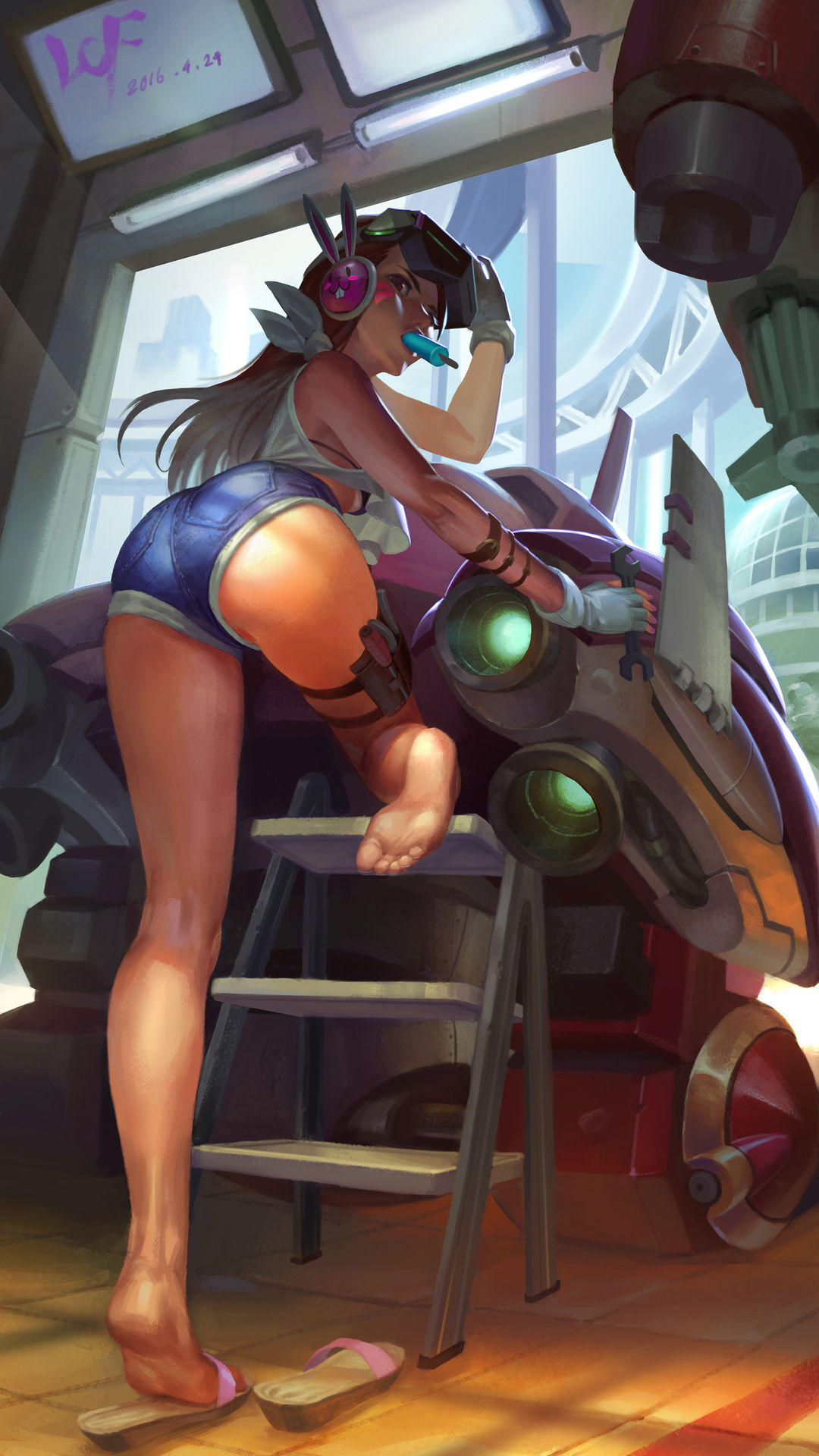
Well, enough of my rants and sexy mechanics ... Back to work!
Nvidia Physx Flex and Other Fluid Solvers for High-Quality Fluid Simulation
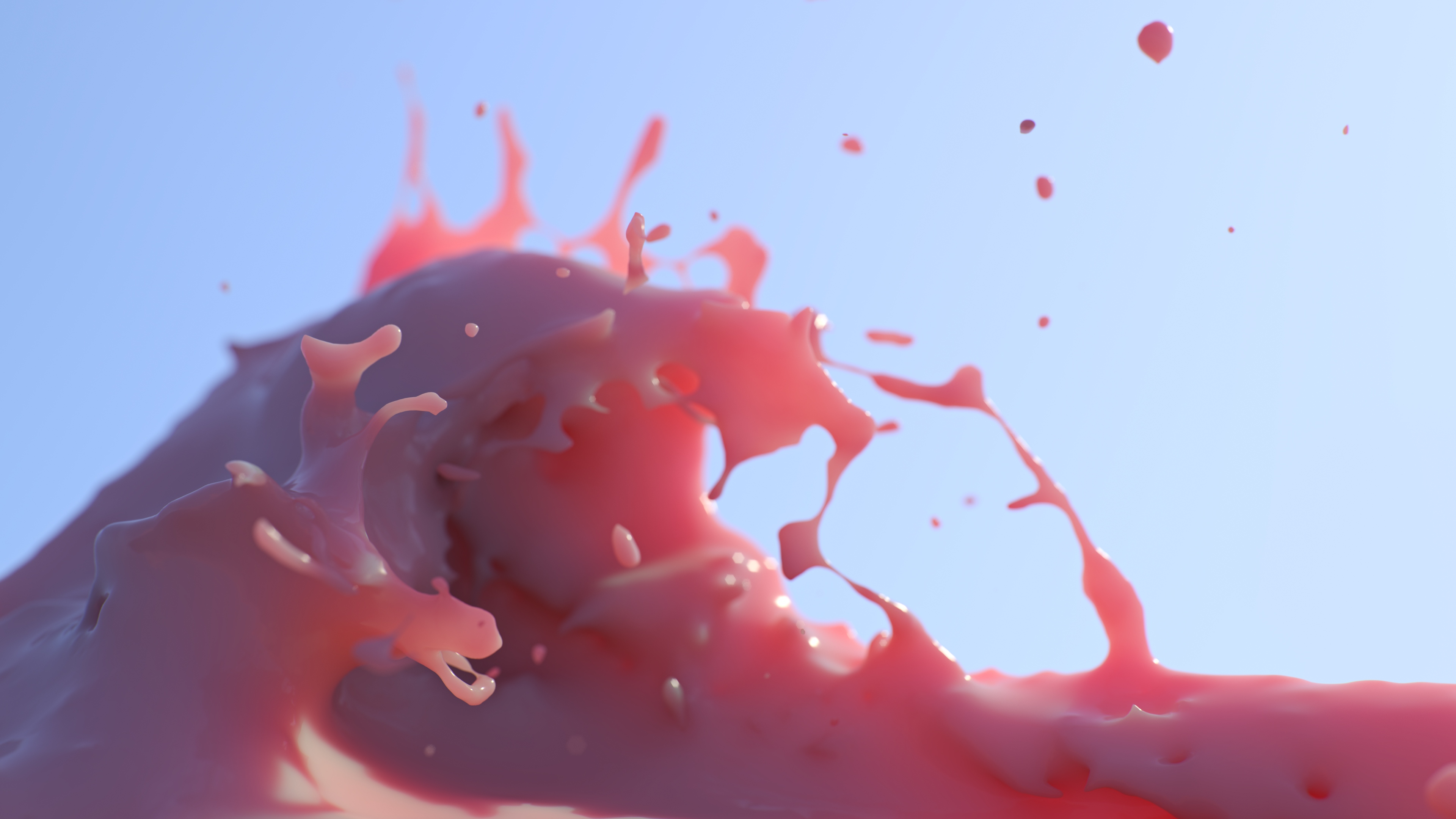 Beware the strawberry milkshake monster!
Beware the strawberry milkshake monster!
Simulations are hard.
When it comes to doing simulations on meshes with a finite number of vertices it's relatively easy to achieve desired results. But as soon as you try taming hundreds of thousands or even millions of particles, you're in trouble. Especially when it comes to doing fluid simulations. You need a special kind of solver, a powerful rig or a network of rigs and a lot of patience. It took me by surprise how difficult seemingly trivial simulations can be.
In the animated film I'm working on I will have bodies of water large and small and certain gaseous liquids in the background for increased production value.
If you're a freelancer or a hobbyist on a budget in need to simulate some fluids, off-the-shelf tools available on the market can be a good choice... But there are so many of them that finding out their differences as well as pros and cons is a quest in itself. In this post I'll explore some of the ways an amateur like me can do various fluid-like simulations and what technologies there are to help get the job done.
The big guns
I'll briefly cover two of perhaps the most well known and renowned fluid sims on the market - Naiad and Realflow.

There was the time when you could only purchase a single Naiad license for 5500$ or rent it quarterly for about 1400$. Luckily those times are over since in 2012 Naiad was sold over to Autodesk and turned into Maya Bifrost. So now you can get your hands on Naiad tech within maya for just $185 a month. You can find out more about Bifrost in this blog post at Digitaltutors. It's a powerful FLIP solver (more on this method below) and well integrated into Maya too with GPU caching and an ability to playback tens of thousands or even millions of particles in real-time directly within the DCC as well as a variety of tools for artistic direction of your simulations.

Then there's Realflow, which comes with several solvers for you to choose (SPH, PBF, HYBRIDO) and with its Dyverso particle solver (the one which uses PBF) gives you the ability to simulate on CPU or GPU, the latter using OpenCL for computations. You can read more about Realflow's solvers here. Overall, Realflow isn't terribly slow and well scalable when you give it lots of cores to work with, but as soon as you realize your hardware limitations and the fact that the cheapest single-seat license with the C4D integration costs over 750 bucks you start looking for other solutions.
Other freeware and commercial tools for fluid simulation
I won't spend too much time on different types of solvers available on the market, only mention some of them for the sake of argument. There's an excellent (albeit slightly dated) article on the subject at fxguide explaining them in detail if you're interested in finding out more.
Oh, Apple...
I'm sorry, I just have to share this =)
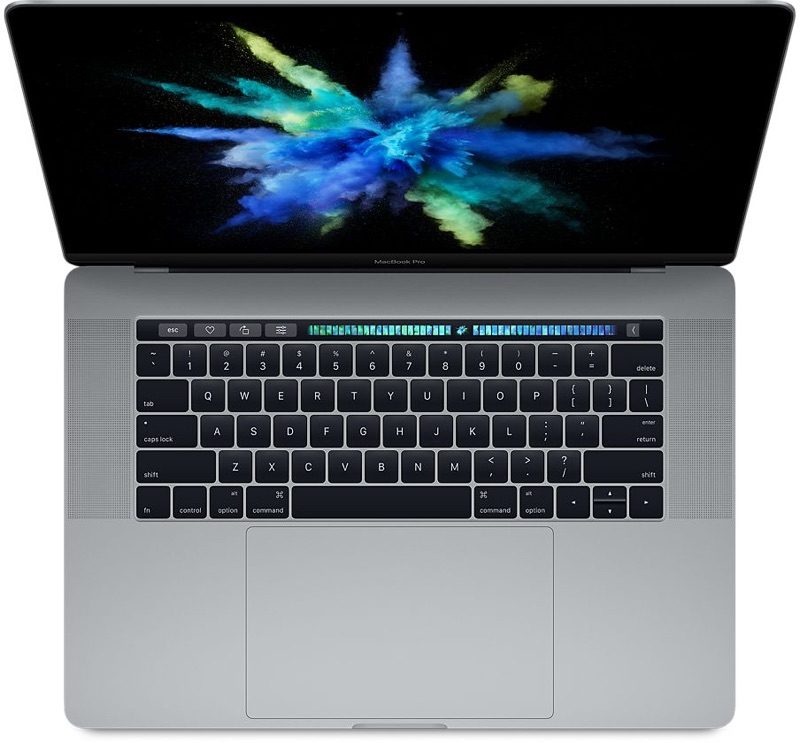
- No hardware function keys
- No hardware ESC
- No MagSafe
- No USB-A ports
- No HDMI port
- No SD-Card slot
- No DisplayPort
- Dongleware trap (with a bunch of adapters)
- 16 gigs RAM cap
- Price to die for. Literally

Oh, Apple, you never fail to amuse!
Softimage Wiki EOL
Update as of 20 Nov 2016: for some reason the Wiki is still available and the notice is gone. I wonder why. Regardless, you still have time to make a local copy of the portal, which is a good thing. Uhm... Thank you, AD?.. (-_-)ゞ
Just an FYI for all XSI-zealots like me out there.
Autodesk decided to stop hosting the Softimage Wiki portal due to... Well, who the heck cares anymore? I guess it's too expensive for a large international company to host a couple of gigs of files. At least they had the courtesy to warn us beforehand.
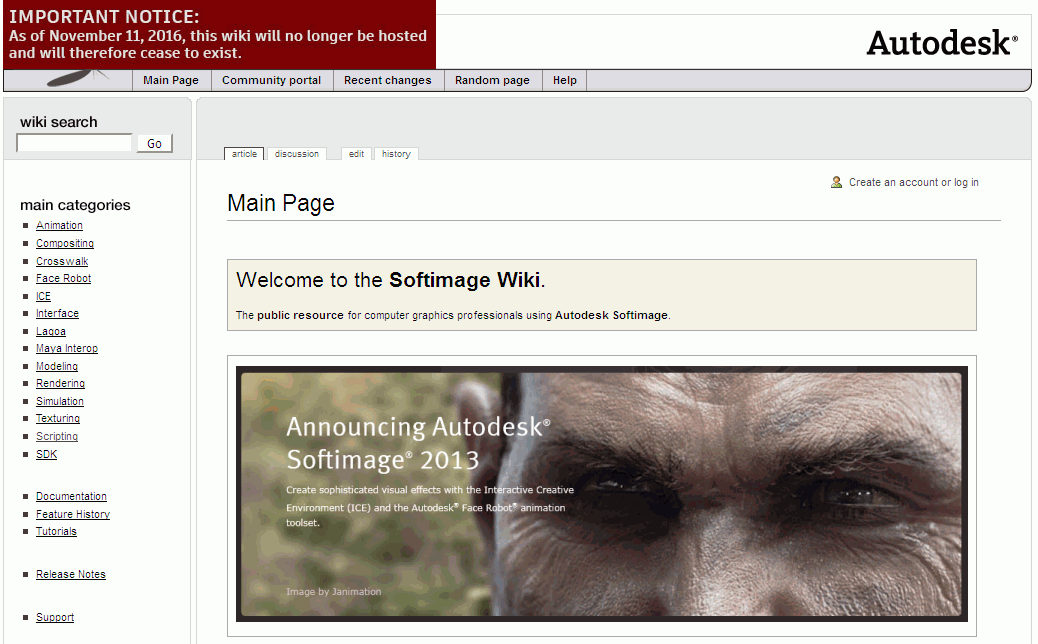
Anyway, there you go.
So if there's something you need from the portal you better make a local copy before Nov, 11.
High-Quality Cloth Simulation With Nvidia Physx Flex (Also Softimage Ice)
This is the first post demonstrating what NVIDIA PhysX FleX is capable of when it comes to high-quality simulations. I'm planning to show how it can be used for all kinds of simulations with the upcoming blog posts. Also a cool demonstration video below.
What is FleX?
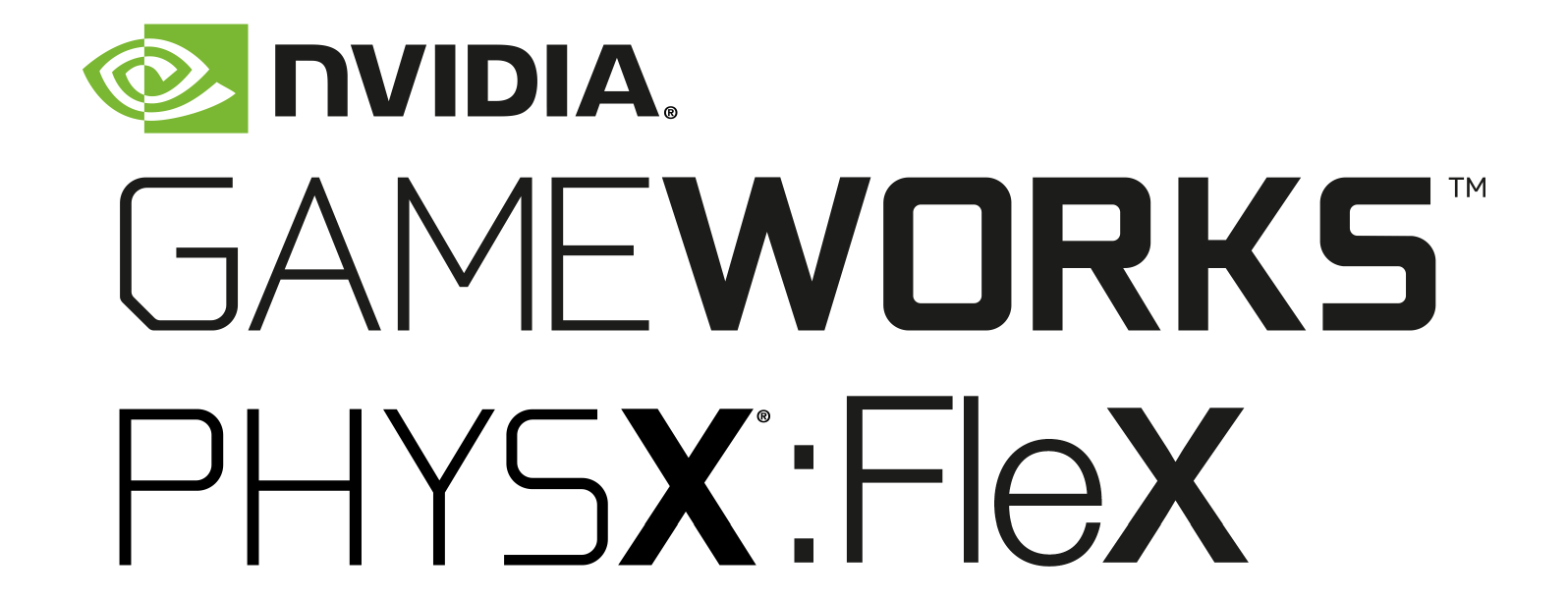
FleX is a particle based simulation framework developed by NVIDIA for real-time visual effects. The idea is the following: instead of a having a bunch of solvers for each type of a body (rigid, soft, fluid, cloth e.t.c.) why not create a unified solver based on the concept of using particles (or “molecules” if you prefer) to represent the bodies? Then, make this solver work on modern GPUs to deliver unprecedented simulation speed and you can actually use the result for real-time simulations in games or interactive presentations.
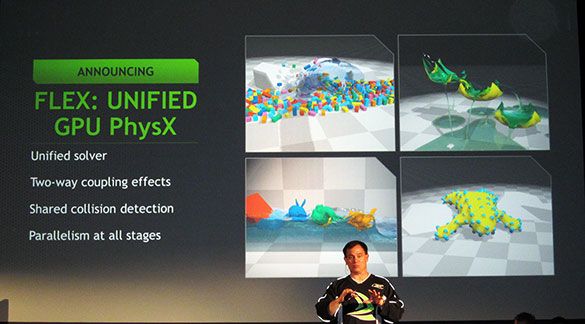
Now, we all know what “real-time performance” means when it comes to the “offline” CGI... ;)